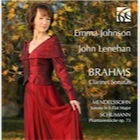The Russian choreographer Boris Eifman arrived in London last week following a New York season that saw him greeted with mixed reviews. According to the online magazine NYC Dance Stuff, Eifman "should be lauded for the brilliance of the genius that he is". The New York Times, however, referred to his company's "staggeringly coarse acting" and accused Eifman of "the worst cliches of psycho-sexo-bio-dance-drama".
Eifman has divided the dance world for decades. Born in Siberia in 1946, he trained as a dancer in Moldova, taught at the Leningrad ballet school and founded his own company in 1977. At the time he was the only high-profile Soviet choreographer working in the modernist vein. While classically based, his work borrowed from the expressionist theatricality of European choreographers such as Maurice Béjart, and pieces likeBivocality (1977), set to music by Pink Floyd, offered an alternative to the frozen-in-aspic Kirov Ballet repertoire and the neo-traditionalist creations of Yuri Grigorovitch at the Bolshoi. That said, Eifman's Leningrad Ballet Ensemble was state-owned and financed, and the Brezhnev-era culture ministry would certainly have censored any work in which it detected the slightest hint of subversiveness.
These days, tours of the Eifman Ballet Theatre are rallying occasions for the Russian expatriate community, which was out in glittering force for Tuesday's first night of the choreographer's Anna Karenina. The piece is set to a melange of Tchaikovsky works, and for dance lovers a challenging note is struck in the first seconds with the opening chords of the composer's Serenade in C Major, a score indissolubly wedded to Balanchine's best-loved ballet, Serenade. This is not to say that the work is out of bounds, but the comparisons it sets up are not in Eifman's favour.
Dispensing with subplots, the choreographer strips the novel back to the love triangle of Anna, her husband Karenin and her lover Vronsky. A brief tableau reveals Anna's sailor-suited son playing with a toy train (hint, hint) and then we move straight into a showy duet between Anna (Nina Zmievets) and Karenin (Oleg Markov). Tolstoy's Karenin is a decent if repressed upper-class functionary, determined to believe the best of his wife until forced to admit her infidelity. Eifman turns him into a suave tyrant who expresses his frustration at Anna's remoteness through marital rape.
In the first of many duets, he swings her from side to side, holds her dramatically aloft and launches her into splashy split jetés, to which she responds with wild eyes, outreaching arms and violent stomach contractions. Technically it's impressive, in a manic kind of way; Zmievets and Markov are evidently superbly trained dancers. But there's no sense of the infinite gradations of feeling detailed in the novel; Eifman does not deal in shades of grey.
As the piece progresses we realise that while the choreographer is magnetically drawn to emotional extremes, he's wholly unable to delineate differing emotional states. So passion, ecstasy and despair all share the same language of frenzied gesture and starbursting limbs. All is hyperbole, with the choreography not so much acted as belted out, as if it were being marked by judges for difficulty. This Anna-on-Ice quality reaches its apogee when Karenin has discovered the affair with Vronsky (Oleg Gabyshev), and in the middle of a violent argument suddenly suspends the scene to elevate her in a spectacular one-handed lift, at the height of which both pause for effect.
What would a newcomer to dance take away from Anna Karenina? Awe, probably, at the stamina and technical skill of the performers. Zmievets and Markov are an amazing double act and Gabyshev pulls every manner of balletic trick out of the bag. There's also a statuesque corps de ballet which Eifman deploys to often impressive effect, particularly in Act 2's masked ball.
What's missing is any real integration of dance and music. Eifman's interest in his patchwork Tchaikovsky score extends only to using it as a backdrop. So the characters have no leitmotif or identifying musical themes, and there's no sense of the concurrent development of music and story. Nor, more importantly, is there any leeway for expressive musical phrasing; the performers are far too busy writhing around their partners or shaping vertiginous lifts. Choreography, like any creative form, demands balance. What Eifman offers is yang without yin, force without yielding, the masculine principle unmitigated by the feminine. One can imagine it going down well in Russia in the same way that topless photos of Vladimir Putin go down well. But it didn't quite work for me.
Buy it from 
- Buy the CD

- Johannes Brahms
- Brahms Clarinet Sonatas in F minor Op.120 No.1 & E-Flat major Op.120 No.2, Mendelssohn Sonatas in E-Flat major and Robert Schumann Phantasiestücke Op.73
- None

No hay comentarios:
Publicar un comentario